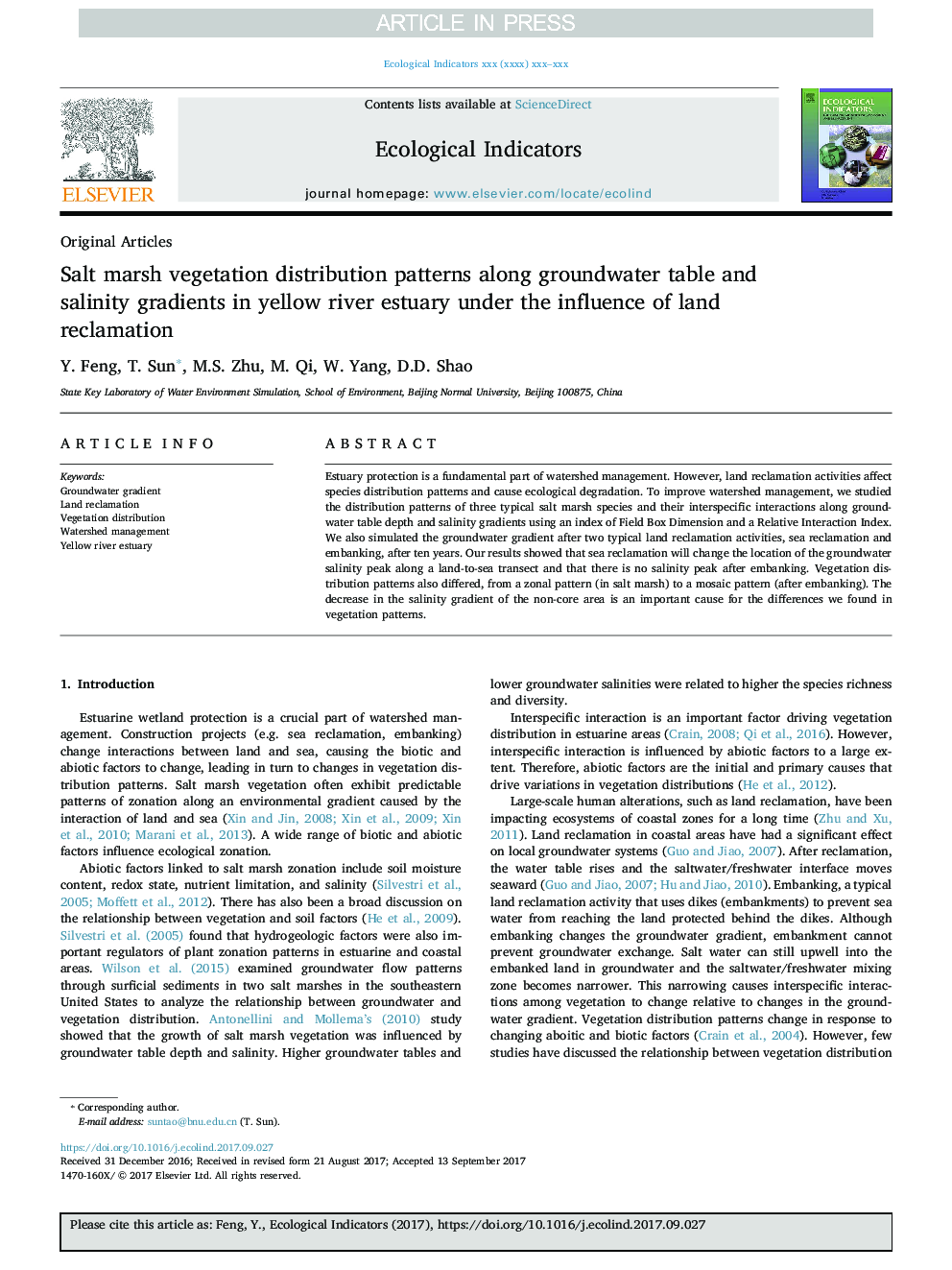| کد مقاله | کد نشریه | سال انتشار | مقاله انگلیسی | نسخه تمام متن |
|---|---|---|---|---|
| 8845197 | 1617110 | 2018 | 9 صفحه PDF | دانلود رایگان |
عنوان انگلیسی مقاله ISI
Salt marsh vegetation distribution patterns along groundwater table and salinity gradients in yellow river estuary under the influence of land reclamation
ترجمه فارسی عنوان
الگوی توزیع نماتدهای پوشش گیاهی خاک در امتداد سطح آب زیرزمینی و شیب شوری دریاچه رودخانه زرد تحت تأثیر احیاء زمین
دانلود مقاله + سفارش ترجمه
دانلود مقاله ISI انگلیسی
رایگان برای ایرانیان
کلمات کلیدی
گرادیان آب زیرزمینی احیاء زمین، توزیع گیاهی مدیریت آبخیزداری، رودخانه رودخانه زرد،
ترجمه چکیده
حفاظت از رودخانه جزء اساسی مدیریت حوضه است. با این حال، فعالیت های احیاء زمین به الگوهای توزیع گونه ها منجر می شود و باعث تخریب زیست محیطی می شود. برای بهبود مدیریت حوضه، الگوهای توزیع سه گونه گونه های نمکی معمولی و متابولیسم متقابل آنها در طول عمق میز آب زیرزمینی و شیب شوری با استفاده از شاخص شاخص ابعاد میدانی و شاخص تعامل نسبی مورد مطالعه قرار گرفت. ما همچنین بعد از دو فعالیت بازسازی معمولی، احیا دریا و راهپیمایی بعد از ده سال، آب شیب زمین را شبیه سازی کردیم. نتایج ما نشان داد که احیاء دریا محل پیک شوری آب زیرزمینی را در طول یک ترانسکت زمین به دریا تغییر می دهد و بعد از ظهور هیچ پیک شوری وجود ندارد. الگوهای توزیع پوشش گیاهی نیز از الگوی زونال (در نمک شور) به الگوی موزاییک (پس از بذر) متفاوت بود. کاهش شیب شوری ناحیه غیر غلیظ دلیل مهمی برای تفاوت های موجود در الگوهای پوشش گیاهی است.
موضوعات مرتبط
علوم زیستی و بیوفناوری
علوم کشاورزی و بیولوژیک
بوم شناسی، تکامل، رفتار و سامانه شناسی
چکیده انگلیسی
Estuary protection is a fundamental part of watershed management. However, land reclamation activities affect species distribution patterns and cause ecological degradation. To improve watershed management, we studied the distribution patterns of three typical salt marsh species and their interspecific interactions along groundwater table depth and salinity gradients using an index of Field Box Dimension and a Relative Interaction Index. We also simulated the groundwater gradient after two typical land reclamation activities, sea reclamation and embanking, after ten years. Our results showed that sea reclamation will change the location of the groundwater salinity peak along a land-to-sea transect and that there is no salinity peak after embanking. Vegetation distribution patterns also differed, from a zonal pattern (in salt marsh) to a mosaic pattern (after embanking). The decrease in the salinity gradient of the non-core area is an important cause for the differences we found in vegetation patterns.
ناشر
Database: Elsevier - ScienceDirect (ساینس دایرکت)
Journal: Ecological Indicators - Volume 92, September 2018, Pages 82-90
Journal: Ecological Indicators - Volume 92, September 2018, Pages 82-90
نویسندگان
Y. Feng, T. Sun, M.S. Zhu, M. Qi, W. Yang, D.D. Shao,
